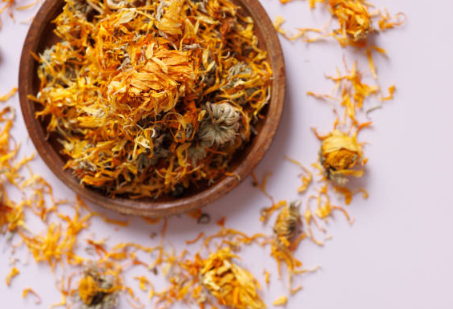Marigolds are a popular flower due to their colorful petals and easy-care properties. In addition to being beautiful, marigolds can help attract pollinators to your garden, repel pests, and even be edible. They also have some fascinating cultural and symbolic meanings that are often overlooked. Marigold flowers were once used in ancient Aztec ceremonies and are still closely associated with Dia de los Muertos (Day of the Dead) in Mexico and the United States. Here are some interesting facts about marigolds that make these plants even more interesting and well worth growing in your garden.

1. New World Natives
Contrary to confusing common names, marigolds are actually native to the Americas, with about 50 species native to North, Central, and South America. For example, Europeans learned about African marigolds (Tagetesecta) through seeds imported from Africa, which were later brought back to North America for cultivation. Similarly, French marigolds are not actually from France either. They are cultivated in large quantities in France, and many varieties are produced and sold around the world in English, hence the name.
2. Edible Flowers
To the surprise of most people, marigold flowers are edible. Whether used fresh, dried, or infused into a variety of beverages, marigolds serve a variety of purposes in the kitchen. The petals are rich in carotenoids such as lutein and can also be used to make natural food coloring with a warm golden yellow color, which is used in a variety of foods, beverages, and animal feed. Known as pericón in Spanish and Mexican tarragon in English, marigolds give a fennel-like flavor in dishes and are sometimes used as a substitute for French tarragon. This type of marigold, as well as other types of marigolds, can also be made into delicious herbal teas.
If you do decide to try your hand at picking and eating your own marigold flowers, it’s important to start growing from seeds rather than buying plants from nurseries. When you’re growing them in your own garden, it’s best to avoid using pesticides on the flowers you intend to eat. Or just use products that are marked as edible and make sure to rinse the flowers thoroughly before eating.

3. Proven Companion Plants
Marigolds have long been used as an accompaniment to a variety of food crops. Marigold plants are especially helpful in growing around tomatoes and potatoes to help ward off tiny subterranean worm-like organisms called nematodes. The roots of marigolds are known to produce various toxins that deter nematodes and naturally protect susceptible plants when planted together.
However, it should be noted that the roots of marigolds also produce compounds that inhibit bacteria. These chemicals can negatively affect legumes such as beans and peas, which rely on bacteria in their roots to process nitrogen from the atmosphere. To avoid this problem, separate the beans from the marigolds in your garden.
4. A Pollinator Favorite
Marigolds are a favorite of many types of pollinators, including bees, butterflies, moths, and even hummingbirds. While many marigold varieties will provide at least some nectar and pollen, choosing single-flowered varieties is a better choice because they have fewer petals. While they don’t require much effort to bloom throughout the growing season, headless marigolds will help your plants inject more energy into new flowers rather than seeds.

5. Day of the Dead Requirements
Marigolds have a special significance for the peoples of the Americas. It is said that during the Day of the Dead, which is celebrated on November 1 and 2 every year, golden petals and fragrances help the souls of the deceased find their way home from the grave. Marigold petals are scattered on the path and used to decorate the family altar known as “ofrendas”, surrounded by candles, the deceased’s favorite food, personal belongings, and photographs.
Day of the Dead is celebrated in Mexico and parts of Central America, and the Day of the Dead is also popular in the United States, Canada, and other Mexican diaspora countries, resulting in a surge in the production of marigold flowers made specifically for this special occasion.

